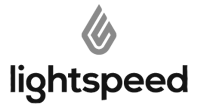It can be time consuming and costly to continue to operate your business with disconnected systems. You might feel overwhelmed with the constant need to hand-key orders, shipping/tracking information, inventory updates and more between your eCommerce platform like Magento, Shopify or BigCommerce and ERP or POS system.
There’s got to be a more efficient way to operate out there. And luckily, there is! Today, merchants have a range of solutions to choose from that connect their eCommerce platform and backend systems to automate critical processes like order fulfillment.
eCommerce platform integration projects can be a big undertaking though. Picking the right integration approach and partner is crucial to the project’s success. Mismanaged projects can end up being too complicated, time consuming and waste thousands of dollars without you ever experiencing a solution that just works. And while you’re trying to figure out, your customer experience continues to suffer resulting in poor satisfaction ratings, increase in customer service tickets, and lost sales. Your reputation is on the line!
Whether you’re looking to integrate for the first time or replace an existing integration solution, we’ll compare three different approaches for how to integrate and what to look for an ideal eCommerce integration solution.
Three Different Approaches to eCommerce Integration
It doesn’t matter what brings you to the point of requiring integration. For some, you’re looking to integrate for the first time while others might need to replace a solution that isn’t getting the job done.
Why Integrate for the First Time?
- Keep overselling
- Spending countless hours on manual data entry between systems
- Making costly mistakes like shipping the wrong item
- Consistently ship orders late and can’t guarantee delivery times
- No visibility into supplier data
Why to Replace a Current Integration Solution?
- Lose web orders regularly because of system crashes or order errors
- Product content or pricing isn’t updating online fast enough
- Inventory updates lag and cause overselling
- Want to add more competitive capabilities like buy online, pick up in-store
While integration helps solve these problems, it only does so if you choose the best integration approach for connecting your eCommerce platform into your financial, POS or 3PL systems.
In this article, we’ll compare the risks, benefits, and costs of three integration approaches, while giving our recommended approach. We want you to pick the right approach the first time around or upgrade to a new solution. You deserve to operate better as a business and deliver the experience your customers are asking for.
Here are three main integration solutions that this article will explore:
- Custom-built: A one-off integration for your systems by writing custom code that ties your systems directly together.
- Software Add-ons (Apps, Modules, etc.): Basic solution to handle one or few parts of your integration using point-to-point integration.
- Middleware: An operational hub sits between your endpoint systems to connect them using pre-built connectors.
Custom-Built eCommerce Integration Approach
Your first instinct as a retailer might be to turn to a custom-built integration solution. These tend to be offered by your eCommerce agency, software consultant or another vendor that may or may not have expertise in integration. You’re familiar with the vendor, they know your business, and you like the price tag. So, what’s the harm in letting them build a custom integration for you?
Talking to hundreds of merchants, we’ve learned that there are common risks that come up repeatedly with custom-built integration solutions. Before you go down this path, consider the following:
Is there a single person running your entire project?
Will your project be delegated to a single developer within the company? If so, this means that one person will build, maintain, and support the entire solution. This often happens to these projects because of limited resources.
What happens when that developer goes on vacation, becomes unable to work, or leaves your vendor’s company?
In one horror story, we worked with a merchant who thought they had an “automated solution”. They were still consistently losing web orders though. When they investigated, they found out their solution was in fact a lone developer moving all $85 million in transactions at night by himself! Unsurprisingly, the merchant’s integration was routinely broken.
How well do they know your endpoint systems?
Vendors with limited or no integration expertise will tend to write custom code for each of their integration projects. They don’t typically leverage an integration platform with pre-built connections for the systems you have.
It’s a serious learning curve understanding the requirements for how each of your systems receives data. You must understand what fields of data must be read or written to. You must understand what business rules and processes to accommodate for. It’s not something you want someone learning on the job.
For example, when integrating your eCommerce platform to an ERP, a common requirement is the need to syndicate your product assortment to the web. This means inserting item data from your ERP platform into your eCommerce platform. The challenge is that item data is used completely different in an ERP system than it is an eCommerce platform. In an ERP, it’s primarily used for inventory management and GAAP accounting practices (an accounting/operational focus). In an eCommerce platform, it’s used as web content and to generate orders (an eCommerce/marketing focus).
How familiar is the vendor with the nuances of each of your endpoint systems? Do they follow best practices for connecting them? How well do they understand how each system is used and why?
Because of their lack of experience with integrating endpoint systems, a vendor often doesn’t know every scenario to meet the common requirements of merchants.
Will your integration hold up over time?
When your integration doesn’t account for all the scenarios where data is missing or imperfect, something as simple as a price on an eCommerce order being different from the price in your ERP system can break your integration
You’ll deal with issues like these all the time when your solution doesn’t meet all your requirements upfront. You’ll end up paying more to have your integration provider to fix bugs and implement enhancements that keep your integration running successfully.
Does your integration allow your business to scale?
A hardcoded, custom solution can tie you to the implementing vendor forever. When you want to change software or add new sales channels, it’ll require your vendor to start your integration over from scratch since they’ve tied each system directly together.
How much does the integration cost?
Custom integration projects can vary in price tags. In some cases, the price tag might be low or inexpensive because the solution is basic and glossing over requirements. On the other hand, your vendor might quote you $20,000 to $30,000 because they’re building an entire solution from scratch. They’re building something new that will only work for your business. The project will take a lot of time and effort on their part to complete.
Be diligent of understanding what you’re paying for and the value you’re receiving.
Bottom Line
There are cases where custom integration projects make sense. You could have a legacy or uncommon system that isn’t easy to connect. You could have truly unique business processes in terms of SKU management or order fulfillment logic that need to be accounted for. However, most businesses aren’t going to fall into these categories.
When it comes to custom, hardcoded integration, don’t box yourself in with a solution that you will outgrow, especially since the purpose of integration is to help you scale processes.
Software Add-Ons for eCommerce Integration
The next integration strategy merchants tend to look at is in their eCommerce or financial system’s app marketplace where you’ll find all sorts of inexpensive (like $100-$200/month) integration solutions. Before downloading an add-on though, consider the following:
Does the app use point-to-point integration?
Many of these solutions are connecting your eCommerce platform and backend system using point-to-point integration, which means there’s no operational hub between your systems. Instead, your eCommerce platform is “pointed at” a financial, POS, or ERP system to send data. This type of connection often limits what data you send, the amount of it, and how often it syncs – which can especially be troublesome if you have a high-volume of data or complex operations.
What types of data does it handle?
Add-ons are usually more basic integration solutions that only handle one or two types of data like your orders and inventory. They may not be able to handle pricing changes for items, large product catalog management across sales channels, or shipping/tracking data with your 3PL or logistic systems. You’ll be limited in the processes you can automate and won’t be able to handle complex cross-channel capabilities like multi-location order fulfillment or supplier integration.
How much effort does it take to add a new sales channel?
As your business grows, these integration apps tend not to scale with you either. As you add sales channels, new warehouses, or update financial systems, you’ll have to add multiple integrations to connect your systems. However, it won’t be as easy add or change your existing solution. Instead, adding an integration for a new system could mean rebuilding your entire solution every time because point-to-point integration only allows for a 1:1 relationship between systems. If you have 3-4 systems, you can need 12+ connections to integrate those systems.

Bottom Line
A basic integration app can be a good place to start if you don’t have high order volumes, large product catalog, or complex fulfillment needs like drop shipping. You can get by with syncing data like inventory updates once a day or less. These solutions can also make sense if you’re only selling on one website and want to sync back to an order or inventory management system.
However, many merchants are already past the point of needing simple integration like these. To name a few scenarios:
- Selling on multiple sales channels like multiple branded websites and marketplaces like Amazon or eBay
- Operate more robust ERP systems like Microsoft Dynamics NAV
- Complex fulfillment process that involve connecting multiple warehouses, drop shippers or suppliers
- Sell to B2B customers that need customer specific pricing
- Complex product catalogs that include matrix items, kits/bundles or complex products like diamonds
While these apps may seem like a good place to start, need like those above are often too complex for them, meaning you’ll quickly outgrow their capabilities. Many merchants realize this after the fact and then rip out these solutions out causing them to start their integration projects over.
Middleware eCommerce Integration Solutions
The last integration approach is to use a middleware platform. These types of solutions have a “hub” that sits between your eCommerce and financial, POS, and/or 3PL systems to automate data transactions between your endpoints. The hub manages the connection, data transformation, and orchestration of data between your systems. Ideally, the platform should utilize pre-built connectors that connect your systems through the hub.
This is an attractive integration approach for growing merchants for a few reasons:
- Integration is an off-the-shelf solution, not custom or point-to-point integration
- Offered by providers whose core business is integration with extensive experience with integrating different endpoint systems
- Sync critical data types such as orders, inventory, customers, items, and shipping/tracking data
- Allows for multiple connectors to additional sales channels and fulfillment locations such as warehouses or logistic systems so solution grows with you
- Handles larger data volumes without system crashes or lagging processes
However, there are several middleware integration providers to choose from. While it can be overwhelming to compare, here are a few areas to consider that will set platforms apart from each other. Ask these types of questions to find a truly sufficient middleware platform.

Are they designed for eCommerce and retail?
While there are many middleware integration providers available, not all of them have a focus in retail and eCommerce. Just like you want to work with an agency that is certified in your eCommerce platform, you should work with an integration vendor that understands your retail needs inside and out. There are unique requirements and best practices when integrating for retail to enable capabilities like drop shipping orders, cross-channel inventory visibility and multi-location/multi-store order fulfillment. Your integration partner should help define a solution that creates a competitive shopping experience for your customers—not just a system API to API data sync.
Is data processed in real-time?
How often does the solution sync your data? Is it synced once a day, every hour or real-time?
Don’t settle for anything other than real-time processing (if that’s what your systems’ APIs can handle). Real-time data processing can prevent many problems such as overselling of out-of-stock items, promotional pricing is up longer than wanted, delays in product listings online, and delays in order processing. Overall, it ensures customers have more positive interactions with your brand.
Do you monitor my data?
Make sure to inquire about the level of support you’ll receive for your integration solution. Do they proactively monitor your data and alert you of any issues? Do they perform data retries for you? Where is their support team located? The faster the support team can help you, the faster you can solve problems for your own customers.
How much visibility do I have into my data?
Your platform should verify that data is BOTH sent and received from each endpoint system. A detailed audit of your data should give visibility into each of your transactions so your customer service team can trace the path of an order through your systems. It should also provide tooling to highlight the failures or exceptions that need to be addressed, instead of burying them in the much larger dataset of successful transactions.
Can I connect multiple different systems?
Many middleware platforms offer a variety of pre-built connectors for eCommerce and financial systems. Look for providers that offer multiple eCommerce, marketplaces, POS, ERP/accounting, and 3PL systems. If you need to add or switch platforms, you want to be sure that you’ll still be able to use the same provider for your integration needs.
How do you handle data when its missing or incorrect?
A robust solution will have built-in processes if data on a transaction is ever missing or incorrect, like when an eCommerce SKU doesn’t exist in your ERP. A well-built solution will be able to handle all different types of data exceptions or notify you of any data issues, saving you from frustrated customers and extra time with support.
What happens when one of my systems goes offline for any reason?
Most retailers have experienced a critical system (like an ERP) crash. It always seems to happen during the most important times, like a flash sale or the holidays. A sufficient middleware platform should be able to store or throttle your data transactions (especially orders) until the system comes back online. This ensures you won’t lose any orders or customer data during downtimes.
Who maintains the platform and connectors?
If the provider is a SaaS or iPaaS provider, they should maintain their platform and endpoint connectors on a regular basis. This means that they’ll take care of security updates, bugs, or any other system updates that affect your integration and will automatically push fixes to the platform and their connectors.
In this type of model, customers pay a monthly subscription fee for this level of platform maintenance, giving you a peace of mind that they’re keeping your integration running.
Bottom Line
Whew! That was a lot of information. We weren’t kidding that an integration project is a big undertaking. However, doing diligent research upfront is the only way to ensure you pick the best solution for you. Integration is such a crucial aspect of your business and being able to compete in today’s industry.
Here at nChannel, we believe that any merchant can achieve integration with the right vision and technology. We’re here to help you find the best approach for your business!
If you want to see if the nChannel middleware integration platform is right for you, click here.






[…] use an ERP. How will you input online orders into your ERP for fulfillment? You’ll need to consider how these two systems will integrate. Without integration, you’ll be stuck manually moving data like online order and inventory counts […]